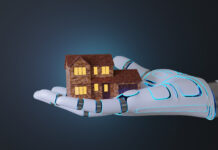
Real estate investors and property developers seek strategies that not only make their commercial properties environmentally responsible but also resilient in the face of economic downturns. As we’re facing a market on the cusp of dramatic volatility, the Leadership in Energy and Environmental Design (LEED) certification has emerged as a viable market resilience strategy. But what is LEED, and how does it contribute to both sustainability and economic stability?
Understanding LEED Certification
LEED, developed by the U.S. Green Building Council (USGBC), is an internationally recognized green building certification program. It assesses the environmental performance and sustainability of buildings across various categories, including energy efficiency, water conservation, indoor air quality, and sustainable materials. LEED certification provides a rating system that ranges from Certified to Silver, Gold, and Platinum, with Platinum being the highest level of achievement.
Sustainability as a Competitive Advantage
Commercial real estate, as an industry, has become increasingly focused on sustainability. Tenants, investors, and consumers are now seeking eco-friendly and energy-efficient properties. LEED-certified buildings offer several advantages in this regard:
Lower Operating Costs
LEED-certified buildings are designed to be highly energy-efficient. This translates to lower utility bills for tenants and property owners. Reduced energy consumption also means lower operating costs, making these properties more financially attractive, especially during market downturns.
Enhanced Lease Appeal
Tenants are often willing to pay a premium for spaces in LEED-certified buildings due to the perceived value of sustainability. In challenging market conditions, properties with LEED certification may have an edge in attracting and retaining tenants.
Better Long-Term Value
LEED-certified buildings tend to hold their value better over time. Investors see these properties as less risky and more likely to maintain their appeal, even when the real estate market experiences dips.
3 Benefits of Using LEED as a Resilience Strategy
One of the primary reasons LEED (Leadership in Energy and Environmental Design) certification stands out as a potent market resilience strategy in the realm of commercial real estate is its exceptional adaptability to changing market dynamics. This adaptability extends well beyond eco-friendly design principles and manifests in several key facets that fortify a property’s resilience:
1. Risk Mitigation
LEED-certified buildings are equipped with a spectrum of sustainable features designed to mitigate various risks, especially those posed by rising utility costs during economic downturns. This strategic focus on risk mitigation serves as a bulwark against financial instability. How does this work?
- Energy Efficiency: LEED-certified buildings are engineered to be exceptionally energy-efficient. By integrating cutting-edge technologies and design principles, they significantly reduce energy consumption, lessening the burden of utility bills. This is of paramount importance during economic challenges when controlling operating expenses is imperative for maintaining financial stability.
- Water Efficiency: LEED-certified properties incorporate water-efficient fixtures and technologies, such as low-flow toilets and faucets, as well as efficient irrigation systems. These elements substantially reduce water consumption, thereby reducing costs and minimizing the financial impact of water rate fluctuations.
- Waste Reduction: Waste management is another critical aspect of LEED certification. The reduction, recycling, and responsible disposal of construction and operational waste not only align with sustainability goals but also contribute to cost savings. In challenging economic climates, these savings can make a significant difference in the property’s financial health.
2. Attracting High-Quality Tenants
LEED-certified buildings possess a unique allure, attracting a specific caliber of tenants who are both environmentally conscious and financially stable. The value of this tenant demographic is particularly apparent when navigating economic challenges. Here’s why attracting high-quality tenants is vital for market resilience:
- Tenant Stability: Environmentally conscious and financially stable tenants are more likely to weather economic fluctuations. Their ability to maintain consistent rental payments is a safeguard for property owners during challenging times.
- Lease Renewal Rates: LEED-certified buildings often exhibit higher lease renewal rates. Tenants appreciate the long-term cost savings offered by sustainable features and are more likely to extend their leases, providing property owners with a reliable income stream even in turbulent market conditions.
- Tenant Satisfaction: A key benefit of LEED-certified properties is the enhanced quality of life they offer occupants. Improved indoor air quality, abundant natural light, and energy-efficient systems create a more pleasant and productive work environment. Satisfied tenants are more likely to stay, reducing vacancy rates.
3. Future-Proofing Investments
Savvy investors recognize that sustainable properties are better positioned to meet the evolving requirements of both regulators and consumers. This forward-looking perspective on investment is integral to future-proofing a property’s value and resilience:
- Regulatory Compliance: As governments worldwide intensify their focus on sustainability and environmental responsibility, regulations and standards are evolving. LEED-certified properties are already aligned with these emerging standards, reducing the risk of non-compliance and potential penalties.
- Consumer Demand: Consumers, including both commercial and residential tenants, are increasingly seeking eco-friendly and energy-efficient spaces. The market’s growing emphasis on sustainability ensures that LEED-certified properties will maintain their desirability and, subsequently, their value.
- Enhanced Property Value: LEED certification often leads to higher property values, even during economic downturns. Investors recognize that sustainable assets tend to be less susceptible to market volatility, making them attractive long-term investments.
Case Studies: LEED in Market Resilience
The Crystal, London
The Crystal, a sustainable events venue in London, achieved LEED Platinum certification. During challenging economic periods, this iconic building continued to attract global events and exhibitions, thanks to its sustainability features. Its rainwater harvesting and solar panels not only reduced operating costs but also provided resilience against utility price fluctuations.
Salesforce Tower, San Francisco
Salesforce Tower, a LEED Platinum-certified skyscraper, has proven its market resilience during real estate market volatility. The building’s sustainable design, including efficient lighting and HVAC systems, contributed to lower operating costs and ensured high occupancy rates, even when market conditions were uncertain.
Embracing Market Resilience with LEED Certification
LEED certification has demonstrated its worth in commercial real estate as a market resilience strategy. Its focus on sustainability, lower operating costs, and long-term value make LEED-certified buildings attractive investments, even during economic downturns. As the commercial real estate industry continues to evolve, the enduring appeal of LEED-certified properties signals their strength in uncertain times. In an era where sustainability and economic resilience intersect, LEED stands as a beacon of hope for those navigating the dynamic seas of real estate investment.




